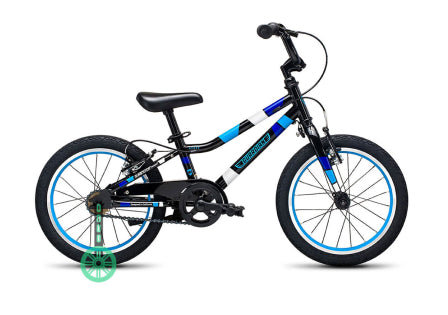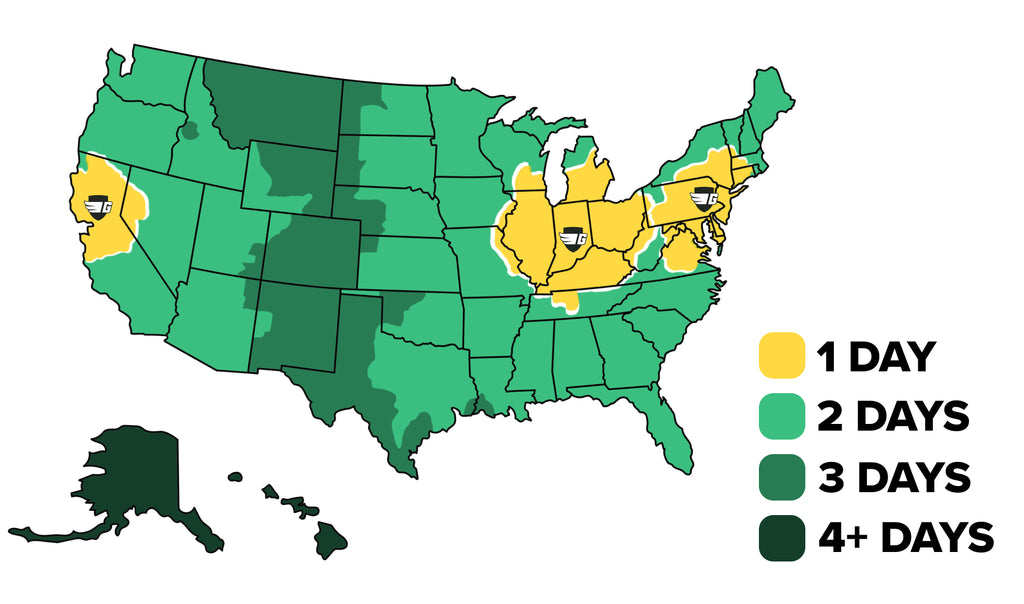Parents Guide For Kids Bike Maintenance
Parents Guide For Kids Bike Maintenance
Your child’s bicycle is their vehicle for adventure. Whether they’re inventing new games with neighborhood kids or enjoying long rides with the family, your child relies on their bike for fun and excitement. That’s why tune-ups and regular bike maintenance are so important - because a well-maintained bike is a safer bike.
Just like you would check the tire pressure on your car, ensure the engine is running smoothly, and change the oil, there are certain basic bike maintenance measures you should take to keep your Guardian Bike riding like new.
How to Wash a Bike
As a grown-up, there’s a simple pleasure in driving around in a freshly-cleaned car. Similarly, a squeaky clean bike may give your child another reason to ride around the block.
Here’s what you’ll need to wash your child’s bike:
-
Bucket, warm water, and clean rags – The cleaning essentials.
-
Bike cleaning brushes and sponges – You can even use old toothbrushes and soft kitchen sponges.
-
Soap – Diluted dishwashing soap works, or you can use a bike wash.
-
Degreaser — A bike-specific degreaser helps to clean the parts of the bike that can become gummy and grimy, like the bike chain.
-
Chain lubricant – Chain lubricant keeps the bike’s drivetrain - the pedals, cranks, chainrings, chain, and cogs - nice and healthy. Depending on the climate of your area and your child’s biking habits, you may need to choose between wet or dry lubricant:
-
Wet Lubricant – Wet lubricant is best suited for wet environments. It adheres to the drivetrain and doesn’t rinse off easily. If you live in the Pacific Northwest and your child loves biking in the drizzle or through puddles, you may consider using wet lube. However, dirt and grit do stick more easily to wet lube, so use it sparingly.
- Dry Lubricant – For long, dry summer bike rides, be sure to use dry lube. Dirt, grit, and gravel don’t stick as well to dry lube, making it easy to rinse off.
Once you’ve got your materials together, it’s time to grab the kiddo for some duo clean time. Here are the four main points of our cleaning process:
- The frame
- The wheels
- The drivetrain
- Lubrication
How to Clean the Bike Frame
- Fill a bucket with warm water. Add a squirt of dishwashing soap to make it nice and soapy.
- Wet the bike to help loosen dirt and grime.
- Soap up a soft-bristled brush and gently scrub out any build-up around the bike’s cables or tubes.
- Using a sponge, soap up the brake pads and break up any mud build-up you might find.
- Run a soapy sponge along the rest of the frame, making sure you get the seat post and handlebars. Then rinse it all and wipe down with a clean towel.
How to Clean Your Child’s Bike Wheels
- Using a large soapy brush, scrub around the tires, spokes, hub, and rims on both sides of the bike wheel.
- Repeat on the other wheel, then rinse off.
How to Wash the Drivetrain (and How to Clean Bike Chain)
- Using a wet rag, wipe down the crankset—that includes the crank arms and pedals.
- Dip a stiff-bristled brush or old toothbrush into your bucket of soapy water. Use it to scrub the front chainrings and rear sprockets.
- Rinse off the drivetrain.
- Spray the derailleurs and chain with a degreaser. Once sprayed, scrub using a brush or toothbrush.
- Wait for a few minutes, then rinse the chainset with water, or just sop up any excess degreaser with a clean rag.
Lubricating the Bike
- Once the degreaser has fully dried, add lube onto each link in the chain. You won’t need more than a dab on each link.
- Wait for the lubricant to dry, then wipe away any excess lube in the same order it was applied so that the lubricant can soak into the links evenly. Too much lube on a bike chain allows grit and other small abrasive particles to stick to the chain, damaging the drivetrain.
How to Check Bike Tire Pressure
A well-inflated tire makes for a smoother bike ride - not to mention a safer one.
When tires are under-inflated, they wear down faster. They also have more friction against the road, which makes the bike harder to pedal. When over-inflated, bike tires handle pressure differently which can make the ride uncomfortable for your child.
There are two methods to use if you want to check a bike’s tire pressure, the Touch Method and the Gauge Method.
The Touch Method
To check if your child’s bike tires need inflating, you’ll need a complex, expensive measuring tool - your thumb!
Gently press on the top of the tire with your thumb to check the tire pressure. Ideally, it should feel as taut and firm as a soccer ball. It’s okay to have a little bit of give, but not too much. If you can make an indent with your thumb, it’s time to break out the bike pump because you have a deflated tire on your hands. However, if the bike tires feel as tight and hard as a basketball, they might be overinflated. Let out a bit of air until the tire softens just a bit under your thumb.
The Gauge Method
If you want to ensure your child’s bike is riding optimally, you may want to use a bike tire pressure gauge. These gauges are inserted into the open bike tire valve and can tell you the bicycle tire pressure in psi - pounds per square inch. Why is that handy? Because bike tires have an optimal pressure to ensure a fun and safe ride.
Luckily, these gauges aren’t expensive. You can buy a digital one for about $15 or use a pencil-style tire gauge. A pencil-style gauge isn’t as exact to read, but it’s lightweight and doesn’t require batteries. Additionally, some bike pumps have a gauge built in to simplify this whole process.
Here’s how to use a pressure gauge to check your child’s bike tire pressure:
-
First, check the proper psi for the tire. Depending on the size of your Guardian Bike, the recommended pressure may be between 20-40psi. If you’re unsure, just take a look at the wheel. The ideal pressure will be marked on the side.
- Open up the valve and insert the gauge. If you’re using a pencil-style gauge, the metal measuring tool will pop out of the main gauge chamber. The number that’s closest to the chamber is the psi. If it’s too low, add air. If it’s too high, let some out.
How to Pump a Bike Tire
Thanks to the impact of biking and the microscopic pores of the wheel’s inner tube, air naturally seeps out of a bike tire. Occasionally, your child’s bike tires are going to need some pumping. Here’s how to do it:
- Make sure your bike pump is compatible with your valve. Guardian Bikes’ tires all use a Schrader valve, meaning it requires pressure on the inner pin to allow airflow in or out.
- Spin the bike wheel so the valve is as close to the ground as possible. (This just makes pumping easier.) Unscrew the valve top and set it aside.
-
Push the head of the pump onto the valve with the lever down. Once the head of the pump is firmly on the valve, raise the lever. This creates a seal around that valve. If you hear air hissing out, take the head off the valve and try again to ensure it’s on properly.
- Now that the head is affixed to the valve, it’s time to pump. Pump air into the tire until the tire is as taut as a soccer ball. If your pump has a gauge attached, keep an eye on it to ensure you’re reaching the tire’s proper psi. If you go over, detach the pump and use a small tool to press the inner mechanism of the valve. This will allow some air to escape.
- Once the air is in, close the pump’s head lever down, and detach the pump. Now your child’s bike is ready to ride!
Guardian Bikes: Your Team of Bike Maintenance Specialists
Bicycle maintenance helps your child enjoy every ride - and helps you enjoy peace of mind. The beauty of Guardian Bikes isn’t just lightweight design or SureStop brakes - it’s the team of bike maintenance experts that come with every bike!
Our Guardian Bikes mechanics are dedicated specialists - and they’re happy to answer all of your bike maintenance questions. If you want to talk about bike service repairs, your Guardian Bike team is just a call or email away.







